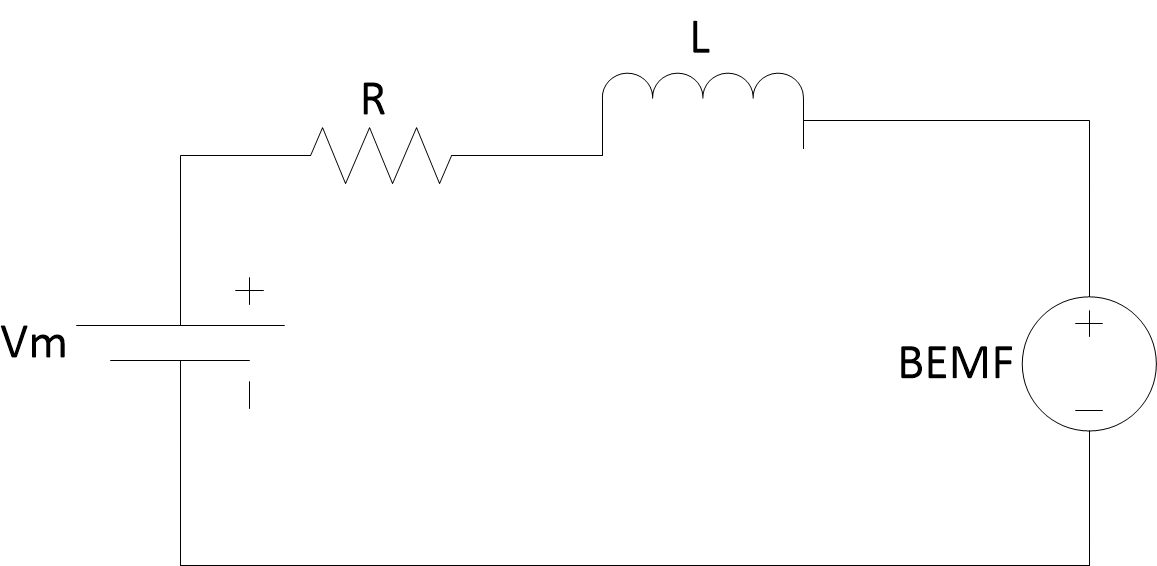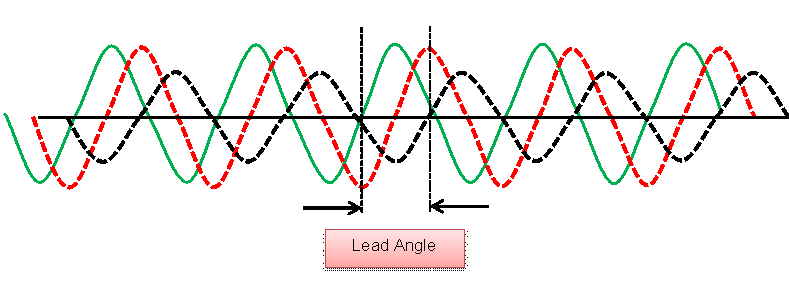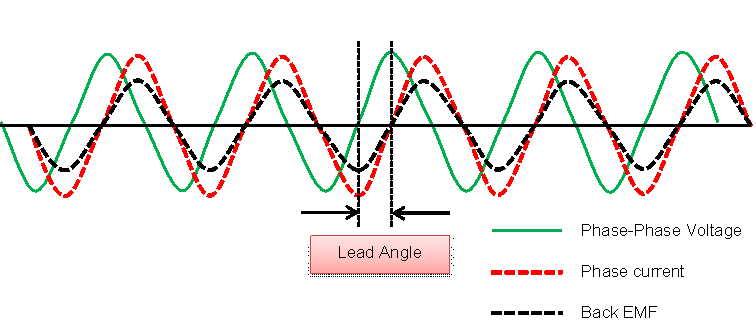SLAA561 October 2020 DRV10974 , DRV10975 , DRV10983 , DRV10983-Q1 , DRV10987
1 Introduction
Lead angle, also known as Commutation control advance angle is the angle between phase voltage applied to the motor and the Motor BEMF voltage. Figure 1-1 shows the basic motor model. R and L are the resistance and inductance of the stator windings of the motor.
 Figure 1-1 BLDC Motor model
Figure 1-1 BLDC Motor modelBecause of the inductance of the motor, phase current of the motor lags phase voltage applied to the motor as shown in Figure 1-2 and Figure 1-3. As a result, the BEMF voltage gets misaligned with phase current. When phase current is not aligned with BEMF voltage, the power drawn by the motor does not get fully utilized to generate torque resulting in poor power efficiency of the motor-driver system. To address this issue, DRV10x sensorless motor drivers provide configuration bits to advance the phase voltage applied to the motor and align the motor phase current with the motor BEMF voltage. Lead angle is expected to be lower for lower inductance motors and higher for inductance motors.
Phase difference between the phase to phase voltage and BEMF voltage is lead angle. In Figure 1-2, the phase current is not aligned with motor BEMF voltage. At this lead angle, the efficiency is expected to be poor. In Figure 1-3, the phase current is aligned with motor BEMF voltage by advancing the phase voltage applied to the motor. At this lead angle, the efficiency is optimized.
 Figure 1-2 Phase current is
un-aligned with BEMF voltage Lead angle is not optimized
Figure 1-2 Phase current is
un-aligned with BEMF voltage Lead angle is not optimized Figure 1-3 Phase current is aligned
with BEMF voltage Lead angle is optimized
Figure 1-3 Phase current is aligned
with BEMF voltage Lead angle is optimized